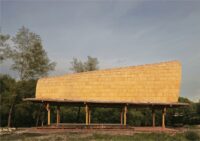- Home
- Articles
- Architectural Portfolio
- Architectral Presentation
- Inspirational Stories
- Architecture News
- Visualization
- BIM Industry
- Facade Design
- Parametric Design
- Career
- Landscape Architecture
- Construction
- Artificial Intelligence
- Sketching
- Design Softwares
- Diagrams
- Writing
- Architectural Tips
- Sustainability
- Courses
- Concept
- Technology
- History & Heritage
- Future of Architecture
- Guides & How-To
- Art & Culture
- Projects
- Interior Design
- Competitions
- Jobs
- Store
- Tools
- More
- Home
- Articles
- Architectural Portfolio
- Architectral Presentation
- Inspirational Stories
- Architecture News
- Visualization
- BIM Industry
- Facade Design
- Parametric Design
- Career
- Landscape Architecture
- Construction
- Artificial Intelligence
- Sketching
- Design Softwares
- Diagrams
- Writing
- Architectural Tips
- Sustainability
- Courses
- Concept
- Technology
- History & Heritage
- Future of Architecture
- Guides & How-To
- Art & Culture
- Projects
- Interior Design
- Competitions
- Jobs
- Store
- Tools
- More
Can Architects Work From Home? Exploring Remote Opportunities and Challenges
Explore how remote work is reshaping the architecture industry in our insightful article. Discover the unique challenges architects face while working from home, from communication hurdles to access to vital tools. Learn how innovative technologies like VR and cloud-based software can enhance collaboration and creativity.

As the world adapts to new ways of working, many of us are asking whether architects can truly thrive while working from home. The rise of remote work has transformed various industries, but architecture presents unique challenges and opportunities that deserve our attention.
We’ve seen how technology can bridge the gap between creativity and collaboration, allowing architects to design stunning spaces without being tethered to a traditional office. With tools like virtual reality and cloud-based software, the possibilities for remote design are expanding. But what does this mean for the future of architecture? Let’s explore how architects can navigate this shift and whether a home office can be as effective as a studio space.

Table of Contents
ToggleOverview of Remote Work for Architects
Remote work for architects has transformed the way we approach design and collaboration. Technology plays a vital role in this shift, with tools like cloud-based software and virtual reality enhancing our ability to work effectively from home. Our design processes have become more flexible, allowing for collaboration across geographical boundaries.

Key aspects of remote work for architects include:
- Digital Collaboration: Platforms like Autodesk BIM 360 and Slack facilitate real-time communication and project management, keeping all team members aligned.
- Design Software Accessibility: Programs such as Revit and AutoCAD enable us to work on designs seamlessly from any location, provided we have a reliable internet connection.
- Client Interactions: Video conferencing tools, including Zoom and Microsoft Teams, allow us to present designs and gather feedback without the need for in-person meetings.
- Work-Life Balance: Remote work offers us the flexibility to create a more balanced lifestyle, which can lead to increased productivity and job satisfaction.
Despite these benefits, challenges exist. Some architects find it difficult to maintain creativity without the interactive environment of a traditional studio. Additionally, potential distractions at home can impact focus and efficiency. However, by implementing structured workflows and setting clear boundaries, we can overcome these hurdles and thrive in a remote work setting.
Benefits of Working from Home
Remote work offers distinct advantages for architects, especially in terms of flexibility and work-life balance. We can explore these benefits further through the following aspects:

Increased Flexibility
Increased flexibility stands out as a significant benefit of remote work. We can set our own schedules, allowing us to choose our most productive hours. This shift often leads to higher efficiency, as we can align our work hours with personal commitments. The ability to work in various environments, whether that’s a home office, a coffee shop, or a co-working space, fosters creativity. Utilizing digital tools continues to facilitate communication and collaboration, making it easier to adjust to clients’ needs and project timelines seamlessly.
Improved Work-Life Balance
Improved work-life balance emerges as another crucial advantage. Working from home eliminates commutes, freeing up valuable time each day. We can dedicate those hours to family, hobbies, or wellness activities that contribute to our overall happiness. This balance significantly enhances job satisfaction, motivating us to perform at our best. By incorporating structured schedules and breaks, we can avoid burnout while still meeting project deadlines. Maintaining this equilibrium proves beneficial not only for our mental health but also for our professional output.
Challenges Faced by Architects
Architects encounter specific challenges while working remotely that impact their productivity and creative output. These challenges often revolve around communication, collaboration, and access to critical tools.

Communication and Collaboration
Effective communication becomes more difficult when working away from a physical office. We face hurdles in immediate feedback and brainstorming sessions, essential for refining designs. Misunderstandings may arise due to a lack of non-verbal cues. While video conferencing tools like Zoom enhance interaction, they can’t completely replicate the dynamic of in-person discussions. Regular check-ins and virtual collaboration tools can help mitigate these issues, but architects often need to adjust their communication styles to fit a remote work context.
Access to Tools and Resources
Access to essential tools and resources remains a significant challenge for architects. Although many software applications exist in the cloud, not all features perform seamlessly over varying internet speeds. High-performance applications like Revit and AutoCAD require robust system specifications, which may not be available on all home setups. Furthermore, the absence of physical resources, such as model-making materials or reference libraries, can limit creative processes. To counteract these limitations, architects can explore local co-working spaces or invest in necessary home office upgrades.
Essential Tools for Remote Architecture Work
Remote architecture work requires a range of essential tools to ensure we maintain productivity and collaboration. Effective use of technology streamlines our processes and enhances our design capabilities.

Design Software
Design software plays a pivotal role in our workflow. Tools like Autodesk Revit, SketchUp, and AutoCAD allow us to create detailed models and drawings efficiently. Each program offers unique features, enabling us to tackle various design complexities. For instance, Revit’s Building Information Modeling (BIM) capabilities facilitate real-time collaboration between team members. We access our design files through cloud-based solutions like Dropbox or Google Drive, ensuring all team members can view and edit documents simultaneously. Utilizing these tools can significantly enhance our output quality and collaboration.
Project Management Tools
Project management tools help us stay organized while juggling multiple projects simultaneously. Platforms like Asana, Trello, and Monday.com provide visual task management, enabling us to assign tasks, set deadlines, and track progress. Using these tools promotes accountability among team members and maintains project timelines. Additionally, employing Slack or Microsoft Teams for communication integrates with project management software, allowing us to address questions or updates promptly. A well-structured project management approach ensures our projects move smoothly from conception to completion.
Case Studies of Architects Working Remotely
We observe several architects successfully adapting to remote work, showcasing innovative practices and strategies.

Case Study 1: Urban Design Firm
A prominent urban design firm based in New York transitioned to remote work in 2020. The firm leveraged cloud-based tools like Autodesk BIM 360 and Microsoft Teams to collaborate effectively. Team members reported a 30% increase in project development speed due to streamlined communication and real-time access to design files. Structured weekly meetings ensured continuous engagement and alignment on project timelines, enabling them to deliver on client expectations promptly.
Case Study 2: Sustainable Architecture Practice
A sustainable architecture practice in California harnessed virtual reality to present design concepts to clients remotely. Using platforms like SketchUp and Lumion, architects created immersive 3D environments that enhanced client understanding. This innovative approach not only deepened client satisfaction but also expanded the firm’s reach, attracting clients from various parts of the country. The firm noticed a 40% increase in client retention rates as a direct result of improved communication and engagement.
Case Study 3: Landscape Architecture Firm
A boutique landscape architecture firm operating from Colorado embraced flexibility in their remote work model. By adopting tools like Trello for project management and Slack for team collaboration, the firm successfully maintained project schedules while allowing team members to work during their most productive hours. Their adaptive schedule facilitated a healthier work-life balance, leading to 25% higher self-reported job satisfaction among employees.
Case Study 4: Architectural Visualization Company
An architectural visualization company found success in remote work by focusing on effective communication. They used Zoom for daily check-ins and fostered a culture of open feedback. This strategy improved project outcomes and significantly reduced miscommunications during the design phase. A 15% reduction in project turnaround time reflected the results of their enhanced collaborative efforts.
These case studies highlight the potential for architects to thrive in remote environments, leveraging technology and structured practices to maintain productivity and innovation.
Conclusion
The architecture industry demonstrates a growing adaptability to remote work, leveraging technology to enhance collaboration and design processes. Architects can maintain productivity through digital platforms like Autodesk BIM 360, Revit, and Slack, promoting seamless communication and efficient project management.
Recognizing the benefits of flexibility, we find that remote work offers architects opportunities to improve work-life balance. Flexible schedules contribute to increased creativity and overall job satisfaction. By establishing structured workflows and setting clear boundaries, architects can effectively navigate the challenges of remote environments.
Despite potential drawbacks, such as the impact of communication barriers and limited access to resources, architects can innovate solutions. Upgrading home offices and exploring co-working spaces can alleviate these challenges.
Real-world case studies show successful adaptations within the industry. By embracing these strategies, architects can flourish in remote settings, enhancing both their work and the experiences of their clients.
- architects telecommuting
- architectural remote positions
- architectural work from home options
- architecture jobs remote
- can architects work remotely
- digital architecture jobs
- flexible architect jobs
- home office for architects
- home-based architectural work
- home-based architecture careers
- remote architect job listings
- Remote Architecture Jobs
- remote design work for architects
- telework architecture positions
- virtual architecture office
- work from home architectural design
- work from home architecture
I create and manage digital content for architecture-focused platforms, specializing in blog writing, short-form video editing, visual content production, and social media coordination. With a strong background in project and team management, I bring structure and creativity to every stage of content production. My skills in marketing, visual design, and strategic planning enable me to deliver impactful, brand-aligned results.
Submit your architectural projects
Follow these steps for submission your project. Submission FormLatest Posts
How to Become a Freelance Architect Step by Step: From License to Loyal Clients
How to become a freelance architect, step by step: licensing, legal setup,...
The Rise of Freelance Architects: Why Having the Right Contacts Matters More Than Ever
Freelance Architects: Built by Connections In today’s flexible economy, more professionals are...
Comprehensive Guide to Salaries and Job Hunting for Freelance Architects
Discover the ultimate guide to freelance architecture, covering salary insights, job hunting...
Finding Architecture Lucrative Freelance Jobs: Top Platforms and Proven Strategies
Discover how to land lucrative freelance architecture jobs with tips on building...











Leave a comment